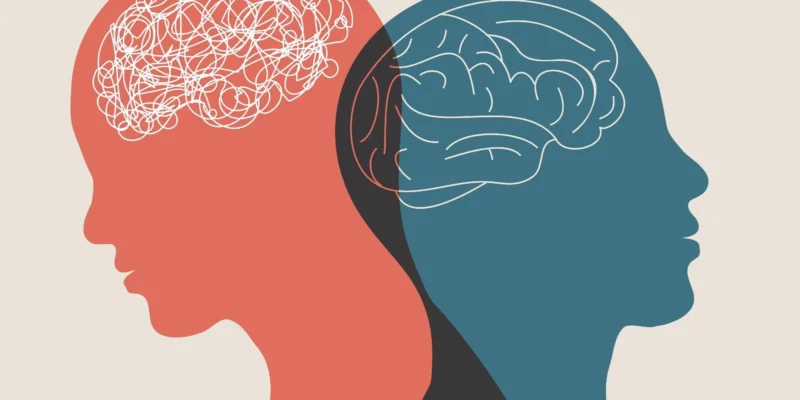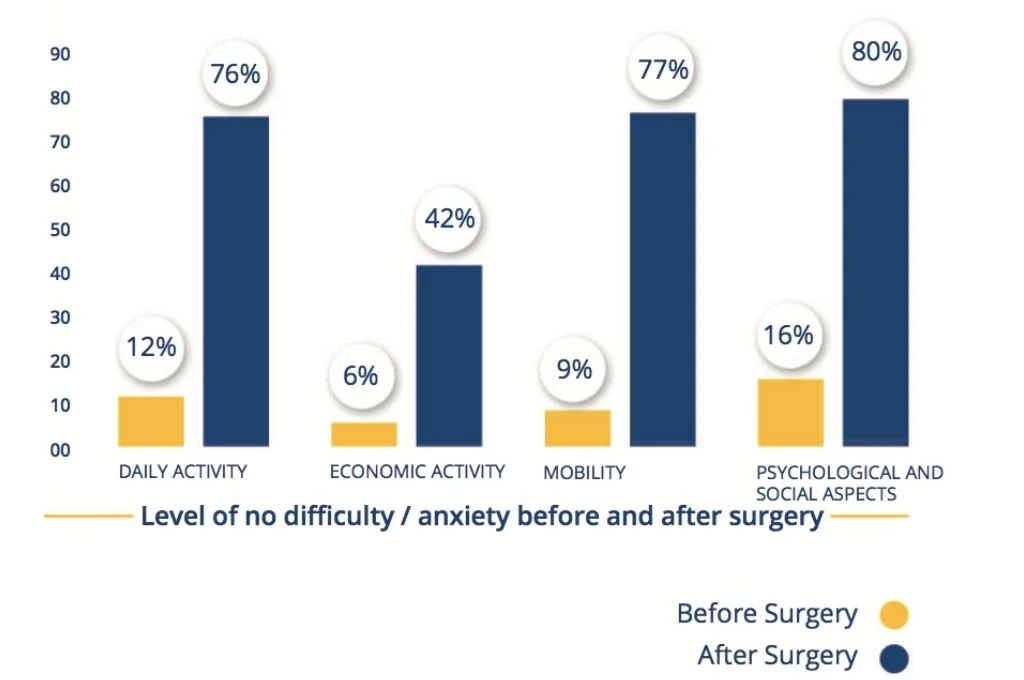Blindness and mental health

According to the WHO, adults with vision impairment often have lower rates of workforce participation and productivity and higher rates of depression and anxiety than the general population.
With the dearth of information on mental health issues among the visually impaired in India, Mission for Vision (MFV) undertook a research study to understand the linkage between vision issues and mental health aspects such as depression and anxiety. The study population comprised of 813 adults with cataract, who were undergoing their first eye surgery. The findings showed that the prevalence of depression amongst adults with cataract was at 87.4 percent and the prevalence of generalised anxiety amongst adults with cataract was at 57.1 percent. This is significantly higher than the prevalence of depressive and anxiety disorders in the general population without vision loss across Indian states, which stands at 3.3 percent each for both genders.
The research concluded that vision loss substantially impairs day-to-day routines and leads to deterioration of mental health. Visual impairment leads to loss of jobs and productivity and it also increases dependence on other family members. In particular, the women of the house often become caretakers of the person with visual impairment, thus limiting their potential and freedom to a large extent.
All of this combined with mental health issues for patients with visual impairment are far-reaching. MFV’s study also observed that adults with comorbid vision loss and depression are less likely to seek, be referred to, or use vision rehabilitation services; and those who do seek care tend to receive less service compared to those who are not depressed. This in turn pushes them further into the shackles of poverty, which affect their future generations and kin as well.
An optimistic vision
In an attempt to gather evidence on various dimensions of eye health systems such as visual acuity, quality of life, eye care practices, and barriers to accessing eye care, Mission for Vision has been using a technological innovation called PRISM (Patient Related Impact Studying Mechanism). This tool evaluates the impact of interventions by asking the patient 30 questions to determine change in quality of life and is administered twice: A few days before cataract surgery and six months after surgery.
Through this, we found that the provision of eye health services significantly impacts the quality of life of individuals. For instance, in the year 2019-2020, we assessed the impact of cataract surgeries on the quality of life of 2,677 patients across 22 states in India though questions exploring the difficulty or ease in daily activities, economic activities, mobility, psychological, and social aspects. The study found that 77 percent of patients reported improvement in mobility and 80 percent of them experienced improvement in terms of psychological and social aspects, thus implying improvements in productivity and mental health.

It is clear that the benefits of addressing avoidable blindness appropriately has enormous economic and mental health implications, not only for the people living with visual impairments, but also for those around them. Enhanced sight has been proven to improve health and well-being, promote workforce participation, and even advance educational attainment for school children.
Similar outcomes were observed in 2016-17, when PRISM recorded data of 17,000+ individuals across India before their cataract surgery. More than 8,000 were contacted after six months to assess the impact of the surgery on their lives. Before surgery, 44 percent of people engaged in livelihood activities mentioned challenges with their earning ability. However, the number decreased to 14 percent six months post the surgery. The visual outcomes after six months also matched with WHO recommendations of 90 percent patients attaining good visual acuity (can see 6/6-6/18) with the best correction. In the case of MFV partner hospitals, 91 percent of patients showed good visual acuity post-surgery.
Copyright © 2023 TARABAI EYECARE. All Rights Reserved. Tarabai Eyecare USA is a 501 (c)(3) registered non-profit organization and all donations are tax exempt in the USA.
